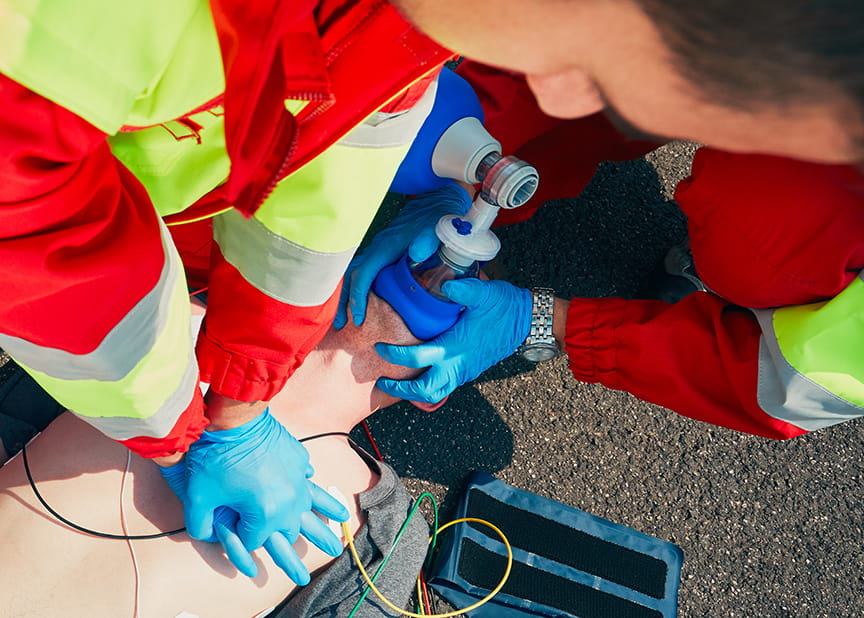The diagnosis of acute myocardial infarction (AMI) involves multiple clinical tools including physical assessment, ECG, and the evaluation of cardiac biomarkers. Electrocardiography produces a physiological signal that is frequently used for diagnosing heart problems, but it is incapable of adequately diagnosing AMI8. Myoglobin, B-type natriuretic peptide (BNP), creatine kinase isoenzyme MB (CK-MB), and cardiac troponin T (cTn-T) are cardiac biomarkers frequently used for evaluating cardiac risk factors.4,13
Biomarker History
Biomarkers have been in use since the 1960s and have continually improved to become more reliable when used to diagnosis a cardiac event.
Aspartate Transaminase (AST)
The first biomarker identified was Aspartate Transaminase (AST), and it was used frequently in the 1960s11 but was not cardiac muscle specific.
Lactate Dehydrogenase (LDH) and Creatine Kinase (CK)
Lactate dehydrogenase (LDH) and creatine kinase (CK) were used in the 1970s, and even though neither was absolutely specific for cardiac muscle, CK was more specific for AMI than LDH.8
Myoglobin
Myoglobin is a small globular oxygen-carrying protein found in heart and striated skeletal muscle1 and was first used in 1978. Myoglobin rises after acute myocardial injury, and it became a useful cardiac biomarker in the differential diagnosis of suspected AMI.6 It appears in the blood 1 hour after myocardial infarction, peaks at 4-12 hours, and then returns to the baseline level.12
B-Type Natriuretic Peptide (BNP)
BNP is a cardiac neurohormone that is synthesized in cardiac cells. It is used as a diagnostic biomarker for congestive heart failure and can predict outcomes in patients with AMI (Wiviott). Some studies have shown that BNP can be a useful biomarker for estimating mortality in acute coronary syndrome (ACS).8
CKMB
Advancements led to the development of isoenzymes of CK and LDH, CK-MB and LDH 1 + 22. CK-MB levels increase in the serum 4-9 hours after chest pain begins, reach peak values within 24 hours, and return to baseline values within 48-72 hours.8 CK-MB is not sensitive enough for diagnosis within 4 hours from the time of symptom onset, but test sensitivity rises 6 hours or more after the onset of chest pain.9
Troponin
In 1965, a new protein constituent of the cardiac myofibrillar apparatus was discovered, which subsequently came to be known as troponin,3 and in the late 1990s, a sensitive and reliable radioimmunoassay was developed to detect it in the serum.10 Since then, the role of cardiac troponins as diagnostic biomarkers of myocardial injury in the context of acute coronary syndrome (ACS) has been well established.5 Troponin levels appear in the serum 4-10 hours after the onset of AMI,7 peak at 12-48 hours, and remain elevated for 4-10 days.5
Cardiac troponin (cTn) is a complex comprising three subunits:5
- troponin C acts as the calcium binding site (skeletal and cardiac muscle);
- troponin I inhibits interaction with myosin heads in the absence of sufficient calcium ions (cardiac myocytes);
- troponin T attaches the troponin complex to the actin filament (cardiac myocytes).
Troponin I and T isoforms are highly specific and sensitive to cardiac myocytes and, therefore, are known as cardiac troponins (cTn).5 The detection of cTn-I or cTn-T in the bloodstream is, therefore, a highly specific marker for cardiac damage.14
Even though increased cTn-T levels are highly indicative of a cardiac event, it is still not 100% specific. There are six mechanisms that have been proposed to explain the release of troponin into the bloodstream: normal cell turnover, myocyte necrosis, apoptosis or programmed cell death, proteolytic fragmentation, increased cell membrane permeability, and membranous blebs.5
Cardiac biomarkers for diagnosis of AMI have become more and more sensitive in recent decades, but the perfect test to diagnose AMI still does not exist. Clinicians need to use every option given to them to quickly and accurately determine what is happening with their patient. Clinical assessment, 12-lead ECG, and cardiac troponin (cTn) I or T form the diagnostic cornerstones of patients with acute onset chest pain.5
Sources
- Danese E, Montagnana M. An historical approach to the diagnostic biomarkers of acute coronary syndrome. Annals of Translational Medicine. 2016;4:194. DOI:10.21037/atm.2016.05.19.
- Dolci A, Panteghini M. The exciting story of cardiac biomarkers: from retrospective detection to gold diagnostic standard for acute myocardial infarction and more. Clinica Chimica Acta. 2006;369:179-187. DOI:10.1016/j.cca.2006.02.042.
- Ebashi S, Kodama A. A new protein factor promoting aggregation of tropomyosin. Journal of Biochemistry. 1965;58:107-108.
- Fathil MF, Arshad MKM, Gopinath SC, Hashim U, Adzhri R, Ayub RM, Ruslinda AR, Nuzaihan MNM, Azman AH, Zaki M, et al. Diagnostics on acute myocardial infarction: Cardiac troponin biomarkers. Biosensors & Bioelectronics. 2015;70:209-220.
- Garg P, Morris P, Fazlanie AL, Vijayan S, Dancso B, Dastidar AG, Plein S, Meuller C, Haaf P. Cardiac biomarkers of acute coronary syndrome: from history to high-sensitivity cardiac troponin. International Emergency Journal. 2017;12:147-155.
- Gibler WB, Gibler CD, Weinshenker E, et al. Myoglobin as an early indicator of acute myocardial infarction. Annals of Emergency Medicine. 1987;16:851-856. DOI:10.1016/S0196-0644(87)80521-8.
- Jaffe AS, Landt Y, Parvin CA, et al. Comparative sensitivity of cardiac troponin I and lactate dehydrogenase isoenzymes for diagnosing acute myocardial infarction. Clinica Chimica Acta. 1996;42:1770-1776.
- Karaismailoglu E, Diken ZG, Akbiyik F, Karaagaoglu AH. A statistical approach to evaluate the performance of cardiac biomarkers in predicting death due to acute myocardial infarction: time-dependent ROC curve. Turkish Journal of Medical Sciences. 2018;48:2377-245.
- Karras DJ, Kane DL. Serum markers in the emergency department diagnosis of acute myocardial infarction. Emergency Medicine Clinics of North America. 2001;19:321-337.
- Katus HA, Remppis A, Looser S et al. Enzyme linked immunoassay of cardiac troponin T for the detection of acute myocardial infarction in patients. Journal of Molecular and Cellular Cardiology. 1989;21:1349-1353. DOI:10.1016/0022-2828(89)90680-9.
- LaDue JS, Wroblewski F, Karmen A. Serum glutamic oxaloacetic transaminase activity in human acute transmural myocardial infarction. Science. 1954;120:497-499.
- Mair J, Artner‑Dworzak E, Lechleitner P, Morass B, Smidt J, Wagner I, Dienstl F, Puschendorf B. Early diagnosis of acute myocardial infarction by a newly developed rapid immunoturbidimetric assay for myoglobin. British Heart Journal. 1992;68:462.
- Mythili S, Malathi N. Diagnostic markers of acute myocardial infarction. Biomedical Reports. 2015;3:743-748.
- Ooi DS, Isotalo PA, Veinot JP. Correlation of antemortem serum creatine kinase, creatine kinase-MB, troponin I, and troponin T with cardiac pathology. Clinical Chemistry. 2000;46:338-344.
- Wiviott SD, de Lemos JA, Morrow DA. Pathophysiology, prognostic significance and clinical utility of B-type natriuretic peptide in acute coronary syndromes. Clinica Chimica Acta. 2004;346:119-128.
Recommended Articles

Cardiac Arrest Algorithm
The Cardiac Arrest Algorithm shows the steps rescuers should take for a pulseless patient who does not initially respond to BLS interventions.

Atrial Fibrillation
Atrial fibrillation (AF) is an abnormal rhythm caused by the rapid firing of multiple cells in the atria, the upper chambers of the heart, which cause the atria to quiver ineffectively. Atrial fibrillation (AF) is the most common sustained cardiac arrhythmia encountered in clinical practice and is associated with increased risk of stroke, dementia, falls, and death, among other outcomes.



